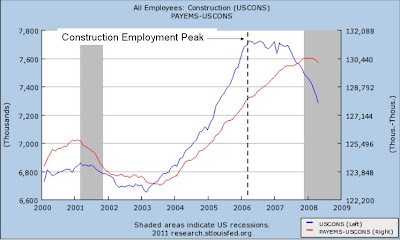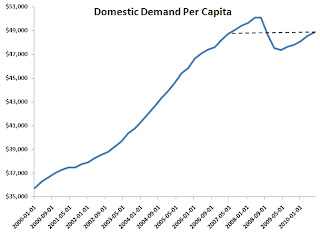Just last week I noted that because of QE2 a real appreciation in China will occur one way or the other: either its currency will appreciate faster or its domestic prices will soar. The former seems unlikely because of China's commitment to its export-driven growth strategy. Consequently, China will most likely stay tied to the Fed's QE2 monetary policy via its crawling peg and continue to allow domestic prices to soar. I also mentioned that this real appreciation should contribute to a rebalancing of the global economy. As if on cue, the New York Times reports the following yesterday:
HONG KONG — Inflation is starting to slow China’s mighty export machine, as buyers from Western multinational companies balk at higher prices and have cut back their planned spring shipments across the Pacific.
Markups of 20 to 50 percent on products like leather shoes and polo shirts have sent Western buyers scrambling for alternate suppliers. But from Vietnam to India, few low-wage developing countries can match China’s manufacturing might — and no country offers refuge from high global commodity prices... The trend, if continued, could ease tensions by beginning to limit America’s huge trade deficit with China.
This is an interesting article throughout, but the one thing it fails to do is connect China's high inflation to the Fed's monetary policy. It is no coincidence that inflation is accelerating now.





















